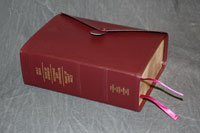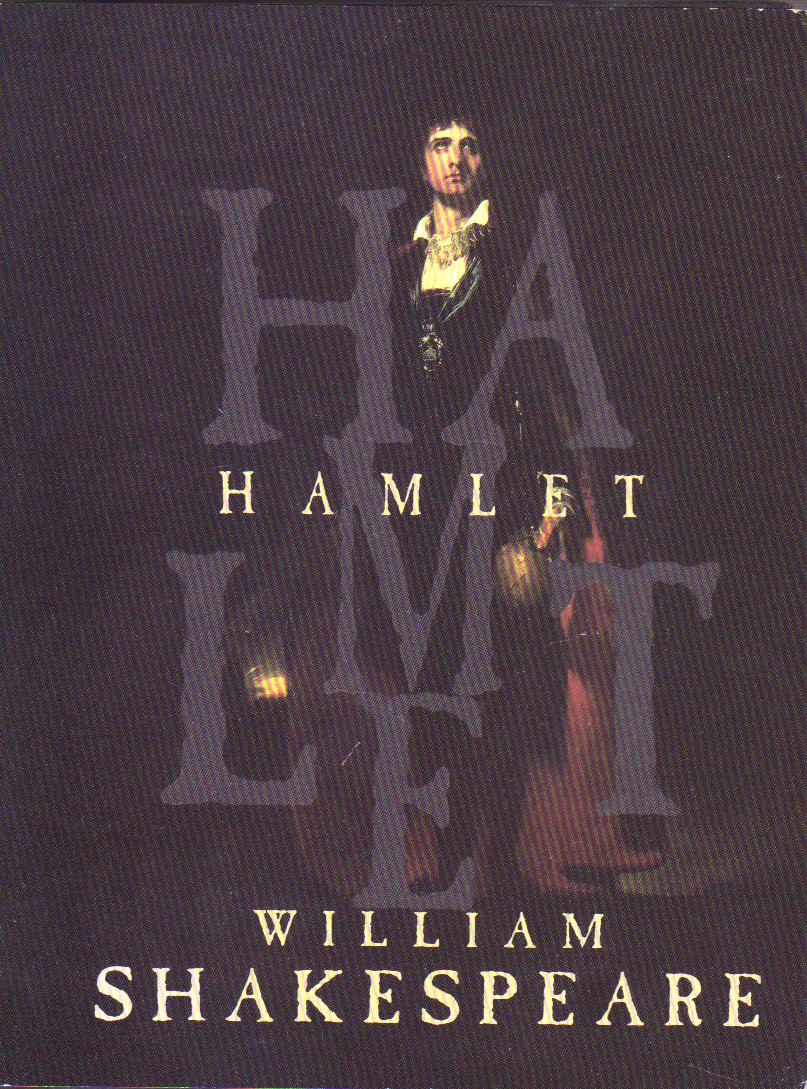There’s been a lot of discussion lately about the definition of a “book,” or more specifically, the proper formatting of an e-book, and the definition of a “page” and its importance in the New eWorld Order.
I’m here to tell you: Unless it’s on paper or in PDF, they ain’t no such thing as a page.
I’ll admit that it took me a while to get used to reading on my eBookWise. Between the whacked-out spacing and the left justification and the lack of paragraph indents, it looked … sloppy. Inferior. But I stuck with it and realized that each book is formatted differently; some are prettier and easier to read than others, but mostly not. I did, however, have problems even with the “prettiest” of the formatting. I was able to adjust my expectations of the presentation once I realized it was a function of the DEVICE and that the DEVICE was not a print book. The print book and the e-book simply have nothing in common except the words they contain: not headers, not footers, not design, not formatting, not … page numbers.
To use the “page” as common ground, each user must have the same edition of a paper book and/or the same edition of the PDF file, but that’s a fairly easy task to accomplish.
In any other format, however, it’s nearly impossible without each user having the same device, the same font settings (i.e., large or small), the same page view settings. Gentlemen, let’s synchronize our devices. Taking the probability of that into account, then, the concept of the “page” vanishes.
The latest argument I have seen for the need for strict pagination in e-books to approximate or duplicate that of a print book is for reference books and the uses of academia viz. for annotation and bibliography, tables of contents and indices, footnotes and end notes. What this demonstrates to me is ignorance or lack of vision or an inability to understand the vast differences in the format, and the capabilities and limitations of each.

When your bishop or your preacher or your pastor or your minister or other Protestant-type ecclesiastical leader gets up and wants everybody to flip open their Bibles, does s/he say, “Please turn to page 1436 in your Bible”? No. He says, “Romans chapter 15.” (Cause that’s where mine is. In the King James Version. What if you prefer to use a different version? No problem! Romans chapter 15 is still where it’s supposed to be, which is between Romans 14 and Romans 16.)
 When your English lit professor or your director or your acting coach directs you to a certain passage in a Shakespearean play, does he say, “Please turn to Hamlet, page 783”? No. (Well, first of all, he’s OBVIOUSLY working from an anthology if it has 783 pages to begin with.) He says, “Please turn to Act 2, Scene 2, Line 35.” So what this means is I was smart and brought my little bitty Hamlet and everybody else was stupid and brought their big fat anthologies. And it makes no difference whatsoever.
When your English lit professor or your director or your acting coach directs you to a certain passage in a Shakespearean play, does he say, “Please turn to Hamlet, page 783”? No. (Well, first of all, he’s OBVIOUSLY working from an anthology if it has 783 pages to begin with.) He says, “Please turn to Act 2, Scene 2, Line 35.” So what this means is I was smart and brought my little bitty Hamlet and everybody else was stupid and brought their big fat anthologies. And it makes no difference whatsoever.
The two print books, Bible and Shakespearean anthology, have page numbers. But they aren’t referred to or necessary for annotation or bibliography. In fact, the only thing they’re used for is within the book itself to create tables of contents and indices.
So let’s talk about that.
There’s only one thing a table of contents and/or index is good for: To find your place in the book. Thing is, in a print book, that’s the only way you can find anything … maybe kinda sorta quickly.
In an e-book, the tables of contents and indices have completely different purposes. In fact, an index isn’t even necessary in an e-book, although I would argue that a table of contents is. However, their function and mechanism of use are entirely different from that of a print book.
- It’s called a hyperlink.
- Now, don’t be scared. I’m sure you’ve seen them before here and elsewhere on the interwebz. You put your cursor over it and click and boom … you’re somewhere else on the interwebz. Cool, huh?
- You can do that in an ebook, too.
- A list of hyperlinks in the beginning of the e-book serves the same function as the table of contents serves in a print book. A print book has page numbers after the chapter name. An e-book has a hyperlink you touch with your stylus and boom, you’re there, same as it works on the interwebz. No page numbers? No problem! Not necessary at all.
- But hyperlinks are good within the text, too. If a word is hyperlinked, you touch it with your stylus and it takes you to further reading. They used to be called “footnotes” and “end notes.” Don’t need those anymore, either. Oh, they’re still footnotes and end notes, but they have no precise structure because it’s not necessary. The device will take you where you need to go.
- It’s called the “find” function.
- You can’t do this in a print book. There is no CTRL-F. There is no “Find.” You go to the table of contents and/or the index and if you’re lucky, that book had an excellent indexer. If you’re not, well, good luck to you then. I’m going out to get some Chinese while you look for that reference. Want anything?
- Is there an e-reading device that doesn’t have a “find” function? If there is, smash it and get something else, ’cause there is no point to an e-reading device without a “find” function. Because why? Because there are no page numbers.
If the argument (with regard to reference material) is that e-reference books can’t be annotated or bibliographed or referenced, there’s a simple way around that. Organize the book in some other fashion, a la the Bible or Shakespeare. It’s been done. The system’s only been around for a few hundred years now. If it ain’t on paper, it ain’t got pages.
And if it’s inevitable, just lay back and enjoy it.

While the links are wonderful in non-fiction and technical books, they can be problematic when a writer wants to control the readers focus in fiction. Cheers.
I LOVE this post. And yeah, the whole page number thing was what was freaking me out on ebooks. Like without page divisions what then, OMG RUN! hahaha. But you make excellent points here. Ebooks are not paper books. And my life will be simpler once I get that.
It seems so simple, doesn’t it? The concept that E-BOOKS ARE NOT PAPER BOOKS? And yet…that’s where everybody’s getting hung up.
Repeat after me: E-books are NOT paper books.
Read e-books on an e-book reading device long enough and eventually, you get it.
Hey, Philip! Glad to see you!
There’s been some debate amongst e-authors and the questioning of readers about their desire for annotated fiction. Thus far, it seems the readers are at an impasse as to whether they’d like it or not (and it seems to me they fall on the “I like footnotes” side or the “I don’t like footnotes” side of the divide anyway).
I haven’t seen annotated fiction in e-books. I toyed with the idea of annotating mine and then decided against it. I do have a hyperlinked table of contents, which I consider critical in a book of any heft.
Back at you, MoJo,
I’m sure that in the Fifth Century BC, parents were complaining, “These kids today–they can’t remember anything if they don’t write it down; they can’t remember a sentence over two hundred words long; and their Homer! They have to READ their Homer!”
I’ve played around with annotating online text here (scroll down to the bottom) and here (click on “Notes” at the top).
Oh, yes!
The transition from an oral tradition to a written one. Classic!
Eugene, I like what you did. But as Philip said, it can detract from the narrative. I also think it may depend on the device as to HOW distracting it is.
For instance, if your hyperlinks online are almost the same color as the surrounding text, you could get away with it. However, in my device, it’s just an underline and it does detract.
In fiction, I would think it’s up to the author to annotate or not, depending on what audience one wants to reach. There are several places in my book I felt I *could* have annotated things that are peculiar to our church, but in the end, I figured a reader could/should get it from context.
However, in yours, you’re translating Japanese stories into English and the nuances need to be explained MORE than our religious culture needs to be explained to an average non-Mormon.
I’m conflicted on the issue and I really struggled with it.
.
I’m too young to remember it from when it happened, but remember when Elder Packer said the new publications of the standard works were a fulfillment of prophecy (the two sticks becoming one in thy hand) and would be remembered as the greatest accomplishment of Spencer W Kimball’s presidency?
Well yes, those are great editions with fantastic helps, but if I really want to find something tricksy, I go to the online version.
You know, I have my problems with President Kimball, but a new printing of an old book or 4 isn’t exactly the greatest ACCOMPLISHMENT of his presidency, hello 1978 revelation.